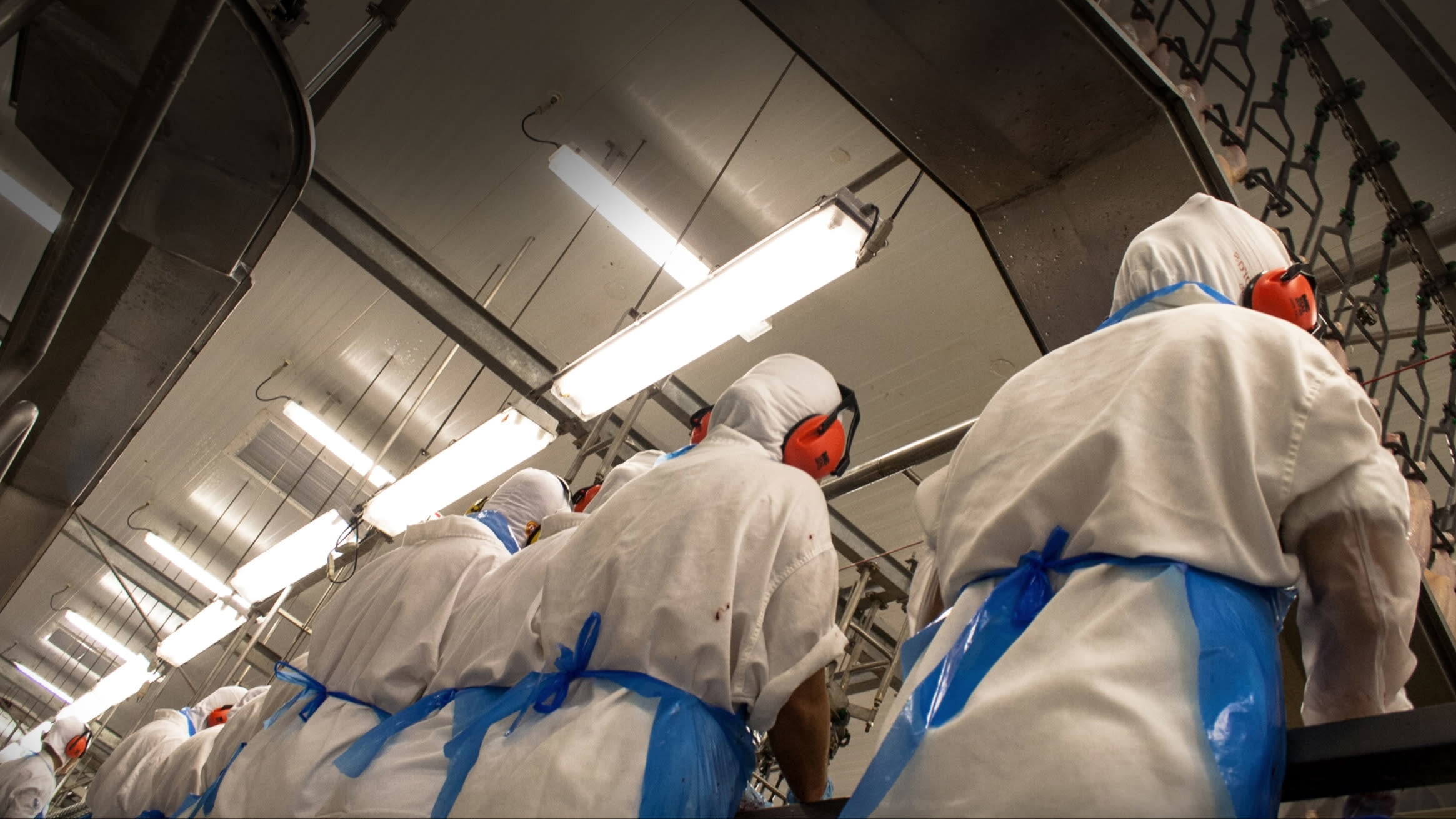Increased slaughter line speeds are dangerous for animals and workers





This is unconscionable cruelty in the name of efficiency and innovation.

The USDA recently announced plans to allow the poultry and pork industry to permanently operate at increased slaughter line speeds.
Currently, 140 birds per minute are slaughtered at meatpacking plants. The USDA wants to raise it by 25%—up to 175 birds per minute.
U.S. Secretary of Agriculture Brooke Rollins made the policy announcement in mid-March, directing the Food Safety and Inspection Service (FSIS) to extend waivers allowing pig and poultry facilities to maintain higher slaughter line speeds—waivers that were initiated by the first Trump administration.
Rollins claims that the Trump administration’s actions against “unnecessary bureaucracy” are “cutting unnecessary red tape, empowering businesses to operate more efficiently, and strengthening American agriculture—all while upholding the highest food safety standards.”
But this “unnecessary bureaucracy” is absolutely necessary for ensuring the safety of farmed animals and slaughterhouse workers. For slaughtered animals, increased line speeds do not equate less suffering. And the industry standard for the way chickens are killed—live-shackle slaughter—is the single greatest cause of animal suffering in processing plants today.
During live-shackle slaughter, live chickens are hung upside down in metal shackles. Because of the speed of the slaughter line, there’s no time to guarantee that they’re properly shackled in, and chickens suffer broken legs as a result. The chickens are then dragged along a line through an electrified stun bath before an automatic blade slits their throats. After bleeding out, the birds are put in scalding tanks to have their feathers removed.
But for millions of birds, the terror doesn’t end at the electrified stun bath. Because of these fast speeds, chickens often miss the bath, and have their throats cut while fully conscious. And for the chickens who miss the automatic blade, they’ll die in the scalding tank—boiled alive. Live-shackle slaughter is supposed to be efficient and effective, but there are no safeguards in place to make sure it’s properly carried out. By permitting faster production lines, an already imperfect and cruel process becomes even more dangerous.
Predictably, the plans to increase line speeds were celebrated by powerful meat industry groups like the National Chicken Council and the Meat Institute—and condemned by workers unions like the Retail, Wholesale and Department Store Union (RWDSU) for its disregard for worker safety. The RWDSU represents over 15,000 poultry workers, and over 100,000 members across the US; the USDA—which announced these plans—does not regulate worker safety. How the FSIS—which “protects the public's health by ensuring that meat, poultry and egg products are safe, wholesome and properly labeled”—can support plans that are the antithesis of safe or wholesome in their production is alarming.
RWDSU President Stuart Appelbaum released a statement in response: “We rely on the thousands of workers to safely produce the food on our tables every single day, they can’t do that safely at these speeds—we learned that lesson the hard way just five short years ago—let’s not irreparably injure workers to learn what we already know… Worker safety must be a priority, and these facilities cannot operate at these speeds without increased staffing, which cannot happen the way they are constructed now. Issuing waivers to a multi-billion dollar industry with no oversight to ensure it’s done safely and properly is a recipe for disaster… The USDA must make worker safety a priority, not profits.”
Slaughterhouse jobs are dangerous and poorly regulated. The workers are predominantly people of color, undocumented immigrants, and from low-income communities–making them easy to exploit without consequence. Increasing line speeds contribute to the already-high risk of worker injury and stress in slaughterhouses—as workers are handling large numbers of distressed, panicking animals fighting for their lives—and there’s a correlation to higher rates of viral transmission as well.
Animal protection advocates and workers rights advocates have a common enemy: the factory farming industry. By ending the cruel practice of live-shackle slaughter, we can create better protections for vulnerable farmed animals and workers, and begin to repair our broken food system.
 Julia Tomkins Wisner
Julia Tomkins Wisner






